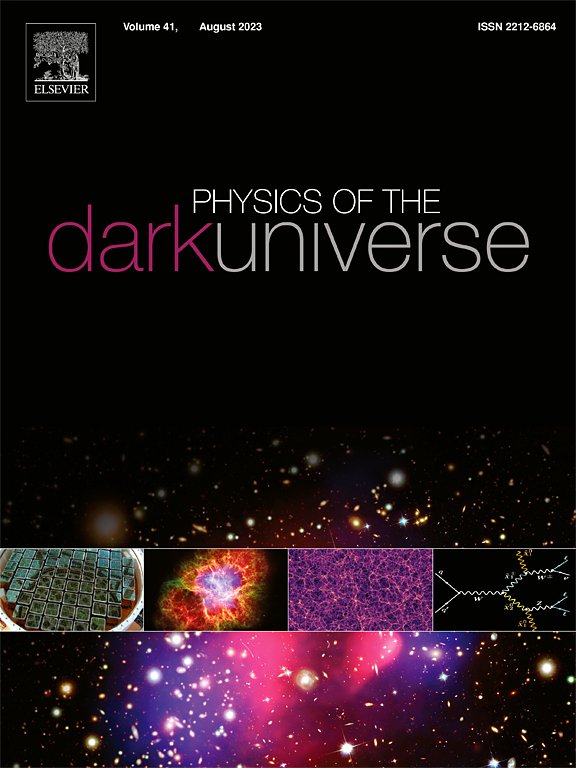Interpreting decisions of lightweight CNN for glitch classification in time frequency images: Enhancing black-hole merger detection in O1 and O2 runs
IF 5
2区 物理与天体物理
Q1 ASTRONOMY & ASTROPHYSICS
引用次数: 0
Abstract
When two or more black holes orbit each other and eventually merge, they emit significant gravitational waves (GWs). These waves, first detected by the Laser Interferometer Gravitational-Wave Observatory (LIGO), are recorded as time-frequency patterns in images. The classification and segmentation of these images are critical for conducting precise and thorough characterization analysis. A robust signal-versus-glitch classifier designed for automation must be capable of handling diverse background noise, new glitch sources, overlapping glitches, and gravitational wave signals. This challenge becomes increasingly complex, particularly in the context of lightweight devices. This study introduce a custom CNN architecture with 1,899,318 trainable parameters, effectively classifying 22 categories in the Gravity Spy dataset (time-frequency domain visualization of glitch behavior), even with the challenging nature of glitches, and showing strong resistance to adversarial attacks. Under 10-fold cross-validation, the proposed model achieves training, validation, and test precisions of 96.02 ± 0.2790%, 96.54 ± 0.2840%, and 97.12 ± 0.5240% respectively. Cohen’s Kappa score is 0.978 ± 0.0038, while the Mann–Whitney and Kruskal–Wallis tests yield 3214.59 ± 1.44 and 0.155 ± 0.003, respectively. The minimum AUC-ROC is 0.98 for only two categories—‘No Glitch’ and ‘None of the Above’ — whereas all other categories have higher values. To enhance interpretability, local interpretable model-agnostic explanations are generated as helping information for the decision-making process, and the model is deployed in a web environment using Flask to evaluate the performance of the CNN model when implemented on lightweight devices.
轻量级CNN对时频图像故障分类决策的解释:增强O1和O2运行中的黑洞合并检测
当两个或更多的黑洞相互环绕并最终合并时,它们会发射出显著的引力波(GWs)。这些波首先被激光干涉引力波天文台(LIGO)探测到,并以时频模式记录在图像中。这些图像的分类和分割是进行精确和彻底的特征分析的关键。为自动化设计的鲁棒信号与故障分类器必须能够处理不同的背景噪声,新的故障源,重叠故障和引力波信号。这一挑战变得越来越复杂,特别是在轻量级设备的背景下。本研究引入了一个具有1,899,318个可训练参数的自定义CNN架构,有效地对Gravity Spy数据集(故障行为的时频域可视化)中的22个类别进行了分类,即使故障具有挑战性的性质,并且显示出对对抗性攻击的强大抵抗力。在10倍交叉验证下,该模型的训练精度为96.02±0.2790%,验证精度为96.54±0.2840%,测试精度为97.12±0.5240%。Cohen’s Kappa评分为0.978±0.0038,Mann-Whitney和Kruskal-Wallis检验分别为3214.59±1.44和0.155±0.003。只有两个类别(“无故障”和“以上皆非”)的最小AUC-ROC为0.98,而所有其他类别都有更高的值。为了增强可解释性,我们生成了局部可解释的模型无关解释,作为决策过程的辅助信息,并使用Flask将该模型部署在web环境中,以评估在轻量级设备上实现CNN模型时的性能。
本文章由计算机程序翻译,如有差异,请以英文原文为准。
求助全文
约1分钟内获得全文
求助全文
来源期刊

Physics of the Dark Universe
ASTRONOMY & ASTROPHYSICS-
CiteScore
9.60
自引率
7.30%
发文量
118
审稿时长
61 days
期刊介绍:
Physics of the Dark Universe is an innovative online-only journal that offers rapid publication of peer-reviewed, original research articles considered of high scientific impact.
The journal is focused on the understanding of Dark Matter, Dark Energy, Early Universe, gravitational waves and neutrinos, covering all theoretical, experimental and phenomenological aspects.
 求助内容:
求助内容: 应助结果提醒方式:
应助结果提醒方式:


